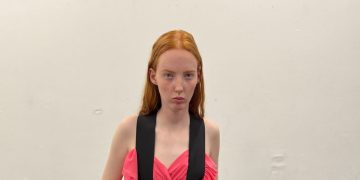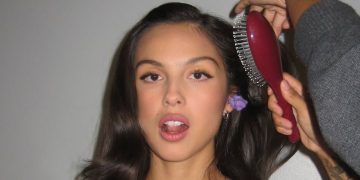Bieber said that she is “really diligent” with her skincare regimen. which (of course) includes products from Rhode, and other cult and derm faves like Avène, BeautyStat, EltaMD, Cosrx, and Naturium. What she doesn’t use—just yet—though? Botox. However, there are some needle-based treatments she has had done: PRP (plasma rich plasma) and PRF (platelet rich fibrin) injections.
“It’s when they take your blood from your arm and they spin it,” she said when describing PRP. “I love doing PRP with microneedling. I’ve talked about that a lot.”
“They take your blood, but it’s called EZ Gel, and basically they heat it and then they cool it, and it kind of makes your blood a gel consistency. And then you inject it. So I’ve done that, which I loved,” she said, describing PRF.
Bieber added that she’s had her smile lines and under her eyes injected. Because the substance “is from your own body,” Bieber said she can “trust” it. Additionally, she gets some “light little laser treatments” a few times a year.
PRP and PRF are basically how Bieber describes. Both are derived from your own blood cells, and they can be used to treat a variety of medical and aesthetic concerns, boosting elasticity and collagen, and promoting anti-ageing effects. They’re celebrity favorites—Kim Kardashian is one other particular fan. If you can cast your mind back, PRP was popularized as the “vampire facial,” with Kardashian famously sharing photos of her bloodied face during a treatment. While it looks dramatic, it shows benefits in promoting tissue regeneration and stimulating collagen.
On the subject of Botox, Bieber was clear: “I don’t have any Botox except for in my jaw for TMJ, but I have no Botox in my face. I made a commitment to myself that I wasn’t going to do any Botox until I was in my 30s. When I get there, I’ll see if I even want to do it.”
TMJ—temporomandibular joint disorder—is a common condition that affects the jaw joint and surrounding muscles. It’s particularly prevalent among women between the ages of 20 and 40, with symptoms that include pain in the jaw, face, and neck, jaw stiffness, limited movement, and clicking or popping sounds. Physical therapy and the use of a mouth guard are considered to be effective in treating TMJ disorder symptoms. Botox is still a relatively new way of treating TMJ; it is reported to help ease jaw tension, headaches, and other symptoms by relaxing the muscles. It’s non-invasive and requires little to no downtime, but it’s still considered an experimental treatment. Botox isn’t officially FDA-approved specifically for treating TMJ.
#Hailey #Bieber #Doesnt #BotoxHeres














